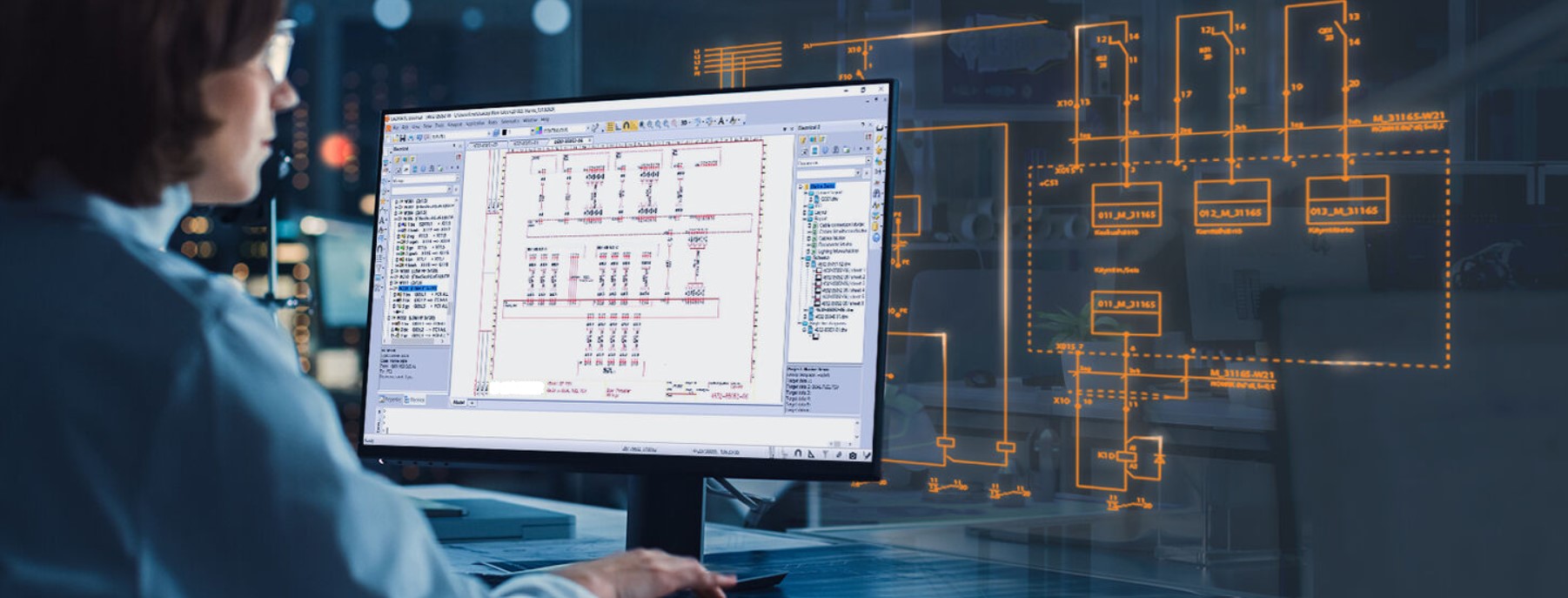Optimizing Industrial Electrical Design for Complex Operations
Optimizing Industrial Electrical Design for Complex Operations
Blog Article
Innovative Electric Design Providers for Modern Facilities
As metropolitan settings grow progressively complicated, including innovations such as clever grids and renewable energy sources becomes critical. These advancements not only assure to optimize power usage but likewise foster durability against future demands.
Relevance of Ingenious Electrical Design
Innovative electrical design plays an important function in modern-day facilities, influencing not just performance however likewise sustainability. As cities evolve and the need for energy rises, the need for sophisticated electrical systems becomes vital. These systems should not just satisfy current demands however additionally expect future growth and technical advancements.
A well-executed electric design can significantly lower energy intake, consequently lowering operational costs and decreasing environmental effect. By incorporating renewable resource sources, such as photovoltaic panels and wind turbines, cutting-edge layouts can enhance power self-reliance and resilience. Wise grid innovations allow for real-time surveillance and administration of energy distribution, optimizing performance and minimizing waste.
Safety is an additional vital element of electrical design. Applying extensive requirements and advanced technologies can alleviate threats related to electric failures, guaranteeing a safe and secure setting for businesses and residents alike. Additionally, ingenious designs assist in flexibility, permitting facilities to incorporate emerging innovations seamlessly.
Secret Fads in Electrical Design
As the landscape of electric design remains to progress, a number of crucial trends are shaping the future of the industry. One substantial pattern is the integration of smart modern technology into electric systems. The spreading of the Web of Things (IoT) has made it possible for real-time monitoring and control of electric tools, improving performance and facilitating predictive maintenance.
One more trend is the expanding focus on modular design. This strategy enables scalable and flexible services, allowing infrastructure to adapt to changing needs without substantial remodellings. Additionally, the use of innovative simulation tools and Building Details Modeling (BIM) is coming to be increasingly prevalent, streamlining the design procedure and improving cooperation among stakeholders.
Furthermore, developments in materials science are leading to the development of lighter, much more durable, and energy-efficient components. This innovation is particularly vital for high-performance buildings and framework tasks.
Finally, there is a marked shift towards data-driven decision-making - electrical design services. Leveraging information analytics aids developers enhance systems for efficiency and cost-effectiveness. Together, these patterns symbolize a transformative period in electric design, improving functionality, sustainability, and strength in contemporary infrastructure
Sustainable Energy Solutions
Lasting energy solutions are significantly coming to be an essential emphasis in electrical design, mirroring a wider dedication to environmental responsibility and source efficiency. These solutions intend to reduce ecological influence while maximizing power intake in different infrastructures, from residential structures to big business facilities.
Among the foremost strategies entails the assimilation of eco-friendly power resources, such as photovoltaic panels and wind turbines, right into electric systems. This not just lowers dependence on fossil fuels but also boosts energy resilience. Additionally, ingenious energy storage systems, such as sophisticated batteries, enable reliable monitoring and distribution of energy, making certain that excess energy created during top production can be made use of during high demand periods.
Moreover, energy-efficient design practices are being adopted to enhance overall system efficiency. This consists of using energy-efficient lights, HVAC systems, and smart structure technologies that adjust check over here and keep track of power usage based upon occupancy and ecological conditions.
Smart Grid Technologies
The application of lasting power remedies naturally brings about the exploration of clever grid modern technologies, which play a pivotal function in modernizing electrical systems. Smart grids leverage progressed interaction modern technologies and data analytics to enhance the integrity, performance, and sustainability of electrical power distribution. By incorporating electronic technology with traditional grid infrastructure, these systems help with real-time tracking, automated control, and boosted decision-making abilities.
Among the vital features of clever grids is their capability to fit sustainable power resources, such as solar and wind power. This versatility not just minimizes reliance on fossil gas however also allows for an extra decentralized energy manufacturing design. Moreover, clever grids enable demand response programs, where consumers can change their power use based upon real-time rates, consequently advertising energy preservation and lowering peak lots demands.
In addition, wise grid innovations enhance grid durability by enabling quicker recognition and resolution of failures, eventually lessening downtime. With predictive upkeep and analytics, energies can optimize operations and boost solution shipment. As cities and communities continue to develop, smart grid modern technologies are essential for developing a find sustainable and reliable electrical facilities that satisfies the needs of modern society.

Future-Proofing Infrastructure
To make certain long-term stability and versatility, future-proofing infrastructure is vital in the quickly evolving landscape of electric design solutions. As innovation advancements and power needs change, it is crucial that electric systems are designed with flexibility in mind. This involves incorporating scalable remedies that can fit future upgrades without necessitating comprehensive overhauls.

In addition, sustainability must be a cornerstone of future-proofed layouts. Making use of renewable resource resources, such as solar and wind, and enhancing energy performance reduce dependency on fossil fuels, straightening with international initiatives to fight climate change.
Verdict
By focusing on versatility, efficiency, and sustainability, these solutions deal with the advancing needs of energy systems. The combination of clever grid technologies and sustainable energy options enhances resilience and decreases operational prices.
A well-executed electric design can dramatically minimize power consumption, therefore lowering operational costs and reducing ecological impact. By incorporating renewable energy sources, such as solar panels and wind generators, ingenious styles can boost power independence and resilience. Additionally, cutting-edge power storage space systems, such as sophisticated batteries, enable efficient management and circulation of power, making sure that excess power generated throughout height production can be utilized during high need durations.
Smart grids make it possible for need action programs, i was reading this where consumers can readjust their power usage based on real-time prices, therefore promoting energy conservation and lowering peak lots demands. (industrial electrical design)
As technology breakthroughs and power needs change, it is vital that electrical systems are developed with flexibility in mind.
Report this page